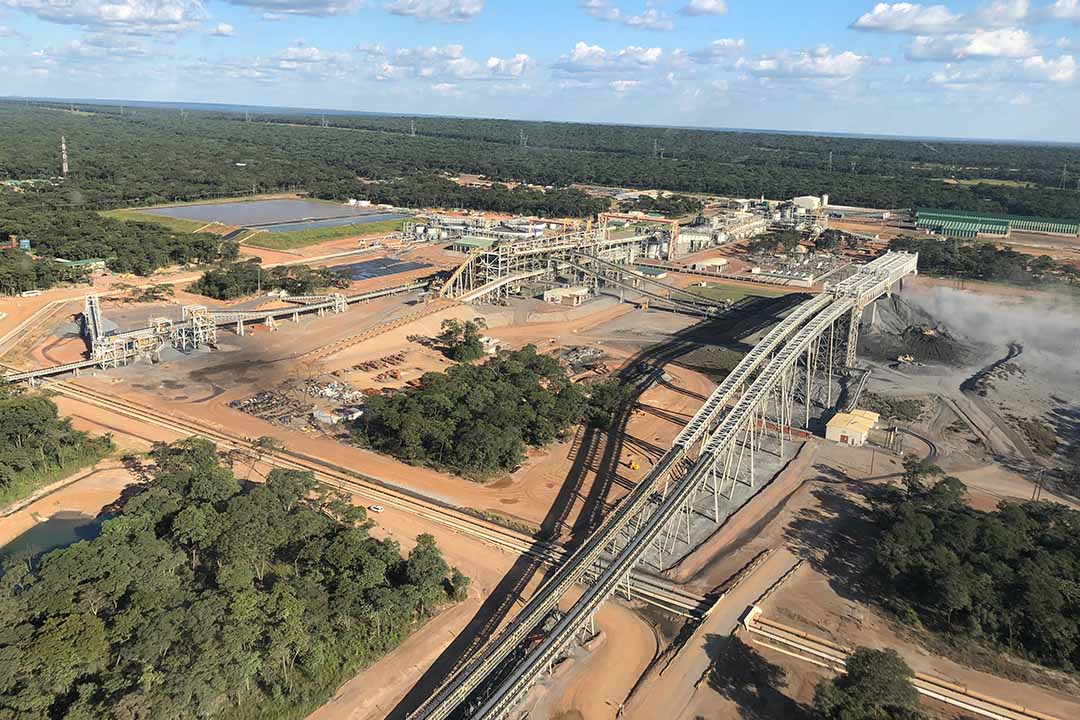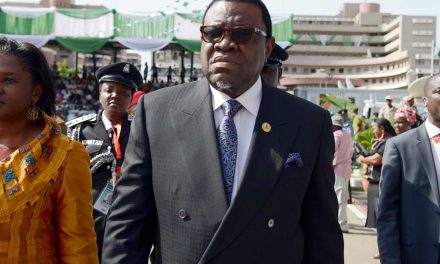The business case for greening the extractive industry is strong, especially with the growing trend of ethical investing.
Everything we consume has its origins in either agriculture or the extractive industries. Our smartphones are laden with minerals and metals. Even agricultural fertilisers come from mined minerals. But the way we’ve extracted, historically, has been both ecologically and socio- economically destructive. Across many jurisdictions, mineral and hydrocarbon extraction has produced negative externalities – a divergence between private returns and social costs. In other words, it’s left holes in the ground, decimated ecosystems and imposed a healthcare burden on workers.

Sentinel copper mine in Zambia. Photo: Ross Harvey/courtesy of Sentinel Copper Mine
Acid mine drainage (AMD) in South Africa provides one example. It occurs when pyrite (fool’s gold) comes into contact with oxygenated water. The consequent oxidation process produces sulphuric acid. Pyrite is a common minor constituent in South Africa’s coal and gold ore bodies. Mining fragments these bodies and large quantities of acidic water are released into the environment, initially into the groundwater and ultimately into streams and rivers, rendering the water toxic to varying degrees. Large settlements in the Witwatersrand area now live with the risks posed by this toxic water and associated sinkhole formation.
AMD expert Terence McCarthy notes that mining has funded much of South Africa’s development, but as it enters its twilight “we are now beginning to grasp the environmental damage that the [gold mining] industry has caused and will continue to cause in the decades to come. We have also seen the impact that coal mining has had, particularly on water quality in the Olifants River system.” We must learn from these experiences and prevent further coal mining in key freshwater catchments and rivers.
Beyond AMD, a recent court settlement in the Gauteng High Court in Johannesburg awarded a total of R5 billion in compensation to mine workers afflicted by silicosis or tuberculosis contracted while mining at six of South Africa’s gold mining companies between 1965 and 2019. Had these costs appeared on the offending companies’ financial statements, they likely would not have been offloaded onto the adjacent communities who could least afford it. Globally, estimates suggest that 24.5 deaths are attributable to each Terawatt hour of coal-fired electricity produced.
Coal is a health hazard, not only to those who mine it but also to those who live near coal-burning power stations. In addition to mining’s direct negative externalities, the short-term rents generated by mining have often precipitated authoritarian consolidation, inequality, corruption and generally poor governance. Elites have captured the spoils at the expense of broad-based benefit. This malaise is part of a broader problem – our economic models (and resultant activity) have ignored planetary boundaries, the limits of what our interconnected life-support systems can sustain. We are consequently at risk of inducing catastrophic climate change.
If greenhouse gas emissions are not severely curtailed, or biodiversity-killing pollution not upended, ecological disaster awaits. Global collective action is now required to change the way that we produce and consume. A major part of that new policy direction has to entail the greening of the extractive industries and the integral connection of mining to green industrialisation. Not only is this possible; it’s imperative. The business case complements the moral case. Such a reorientation would simultaneously address the negative legacy effects of mining and create sustainable links to other sectors of the economy.
The technological quest for a low-carbon economy is well under way. Transport and energy revolutions are upending old systems. Electric vehicle and renewable energy production, however, require significant quantities of minerals and metals – double the volume currently mined, according to the World Bank. But most remaining coal and hydrocarbon deposits will have to be left in the ground, rendering the need for a “just transition” away from dirty technologies to clean ones. To support this transition, the mining industry needs to be reoriented to supplying the minerals and metals required for generating and transmitting renewable energy, for building electric vehicles, and continued inputs for other products such as smartphones and batteries.
Through the adoption of new technologies, we can mine in a less environmentally destructive manner. This would also create upstream opportunities to produce the capital equipment required for less environmentally invasive mining methods. Practically, what might this look like? To begin with, unmanned aerial vehicles (UAVs) can transform geological exploration. Sensors on UAVs can detect geothermal activity, which helps exploration firms to drill and sample only in areas where resources are indicated. In the production phase, robots can work in hazardous environments instead of people, improving mine safety considerably.
Underground deposits can be accessed through relatively minor invasion, akin to laser or “keyhole” surgery. A 2015 paper, ‘A vision of Zero Entry production Areas in Mines’ (ZEPA), co- authored by four scientists from Lulea Tekniska Universitet Institut in Sweden, proposes that in mines “all work processes should be remotely operated or automated, while special mine robots should be developed for the preventive maintenance of equipment and safe retrieval operations”.
The Kankberg Gold Mine in Sweden exemplifies the art of the possible. Boliden (the mining company), in partnership with Ericsson, ABB and Volvo “plans to eventually operate with no personnel in the mine itself”. Connecting different technologies such as a 5G wi-fi network and a Smart Ventilation system, the mine is now completely automated. The resultant process optimisation has saved 54% of the mine’s energy consumption. This represents a saving of 18 MW a year on a mine that previously consumed 34 MW a year.
In South Africa, mining consumes about 15% of the country’s national electricity supply, equivalent to roughly 5,100 MW. If the sector could reduce this demand by half, it would free up 2,550 MW from a supply-constrained grid. The industry paid 86 cents per kilowatt hour (kWh) for coal-fired power in 2017/18. A reduction of 2,550 MW a year would represent a cost saving of R2.25 million. Further cost savings would be wrought if a larger portion of power was sourced from renewables, as global procurement prices of solar PV power are now around the equivalent of 26c/kWh. Procuring renewable energy and decreasing overall demand is therefore eminently sensible business practice for the mining industry, with positive spillover benefits for society and the environment.
Note that modern mines need to achieve a plant recovery rate of at least 90% to cover escalating fixed costs. With declining grades and the need to mine deeper ore bodies, new methods are required to reduce rock movement, mine more selectively, and achieve quality over quantity. Motivated by these requirements, “in-place” mining and processing at the point of extraction is gaining traction. It will deliver a smaller surface footprint, reduced tailings generation and low-capital-intensive mines. Mining projects could attract financing more easily and deliver returns more quickly than with the conventional model.
Emerging digital technologies in automated rock-face mapping, material characterisation and fragmentation analysis, and rock preconditioning can also be built into the equipment and preprogrammed for specific mines. The machines that cut hard rock are now able to identify and exploit natural rock cleavages to make cutting more efficient. Declan Vogt of the Centre for Scientific and Industrial Research (CSIR) in South Africa notes: “If rock can be cut rather than blasted, mining can become continuous, leading to process and efficiency improvements.”
Crushing technology is also becoming nimbler, making obsolete the big crushers typically required at processing plants. Employing upstream technology at the rock face, to selectively mine and pre-concentrate material for subsequent metal extraction, avoids the many negative environmental impacts usually associated with mining. In the case of copper, crushing is among the largest components of a mine’s energy consumption and greenhouse gas emissions. These can be drastically reduced by in-pit mobile crushing, which, according to research scientists Terry Norgate and Nawshad Haque, “eliminates the need for trucks by having the shovel feed the run-of-mine ore directly to a continuous and dedicated belt conveyor handling system”.
Of course, these new technologies are disruptive. Mining will become less directly labour-absorptive and more capital-intensive. But they may also result in lower cost margins and greater wealth creation, which can be allocated towards research and development initiatives that develop local upstream or side-stream capacity. As economist Ricardo Hausmann famously pointed out in 2014, Finland did not become wealthy because it turned its forests into furniture; it became wealthy because the quest for more efficient tree cutting methods produced Nokia. How? Through the development of appropriate technology.
One copper mine in Zambia is charting the way in this respect. Sentinel Mine, adjacent to Kalumbila, is a “pocket of effectiveness” – an example of how mining should and could be done. Input crushing and investments in data analysis, artificial intelligence and machine learning are already a feature. Once the ore body is depleted, the river – currently diverted – will be restored. Every effort is being made to prevent soil and water contamination. The surrounding forest, part of the ecological restoration programme funded by the mine, currently supports a sawmill and furniture-making factory. When the mine closes, the factory will continue, and the entire concession converted to a nature reserve with a five-star tourism offering.
The town itself is separated from the mine and boasts an industrial development zone, which can tap into upstream, side-stream and downstream links with mining. The business case for greening the extractive industries is strong, especially with the growing trend of ethical investing and the importance of environmental, social and corporate governance (ESG) reporting. Internalising the cost of negative externalities, it turns out, is a sound business investment











